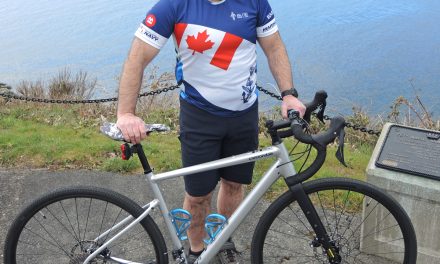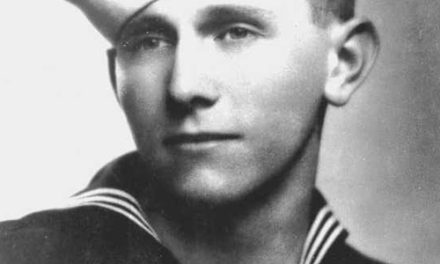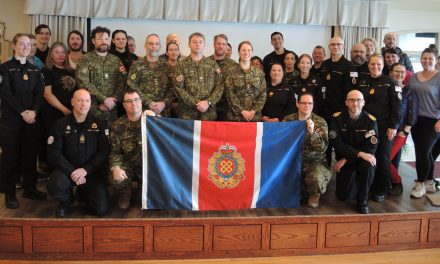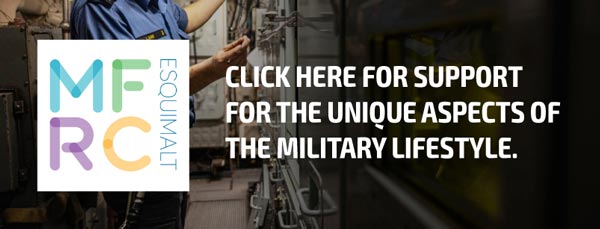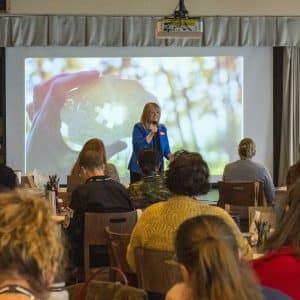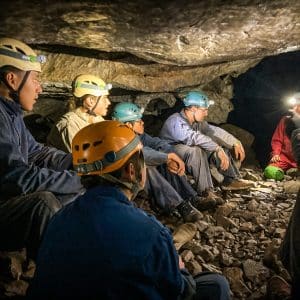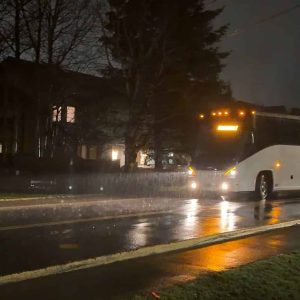A/SLt Kim Wachockier, MARPAC Public Affairs
- Twelve students from Camosun College’s Enhanced Bridge Watch Rating Program toured HMCS Vancouver on Sept 17 to explore life aboard a Halifax-class ship.
- The visit gave students firsthand insight into naval operations, seamanship, and technical systems aboard a Royal Canadian Navy (RCN) frigate.
- The partnership fostered learning, inclusion, and awareness of marine and defence career opportunities for women and Indigenous Peoples.
–
Twelve students from Camosun College’s Enhanced Bridge Watch Rating Program stepped aboard His Majesty’s Canadian Ship (HMCS) Vancouver on Sept 17 for a guided tour of life on a Halifax-class vessel.
Intended to prepare participants for a career in the marine sector, the Camosun Enhanced Bridge Watch Rating Program is a fully funded training opportunity for women and Indigenous Peoples that teaches seamanship and navigation skills. It also allows them to earn Transport Canada recognized certifications throughout the program. By opening Vancouver’s doors and hatches to students, the Royal Canadian Navy (RCN) fostered awareness, interest, and respect for naval service while simultaneously building relationships with the next generation of marine professionals.
Once onboard for the guided tour, students were eager to experience the naval environment studied in the classroom, explore living quarters, and learn how an RCN frigate operates. The visit began inside the ship’s hangar, where Lieutenant(Navy) Joey Dooley welcomed the group of students, explaining the use of embarked helicopters during deployments. Lt(Navy) Dooley then brought students onto the deck to showcase equipment specific to Halifax-class frigates. These included Vancouver’s missile systems, Bofors 57mm rapid-fire gun, and its ammunition. Here, students also received the opportunity to handle a non-live round.
Once within the vessel, Lt(Navy) Dooley gave students a look into Vancouver’s living quarters, showcasing bunks and other spaces where RCN sailors spend months at sea. The tour then shifted to the Marine Systems Engineering (MSE) department for a briefing on the technical systems that keep Vancouver running. Students then ascended to the bridge, where Lieutenant(Navy) Stefan Burlakow described navigation equipment and procedures. The visit concluded with a shared meal in the officer’s mess following a brief presentation on some of the many different career paths within the RCN.
“We are grateful to the Royal Canadian Navy for welcoming students aboard HMCS Vancouver so they could explore the wide range of opportunities available to them in the marine and defence sector,” said Dr. Lane Trotter, President of Camosun College. “These experiences strengthen our growing relationship with the navy and help students envision their own future on the water.”
One of many past and future RCN engagements with post-secondary students in the marine sector, such tours continue to demystify life at sea, highlight the RCN’s role in national security, and inspire future Defence team members.


